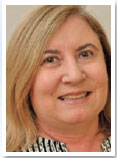Keila Monteiro de Carvalho
DOI: 10.17545/eOftalmo/2022.0019
The eOftalmo journal is a quarterly bilingual (Portuguese and English) scientific publication of the Brazilian Council of Ophthalmology for ophthalmologists and other healthcare professionals. It aims to publish literature review articles, updates, expert opinions, perspectives, and discussions on various fields of ophthalmology.
Lifelong learning is essential for ophthalmologists in their daily practice. Therefore, each physician must follow a personalized continuing medical education process aimed at developing the clinical and nonclinical skills required for best clinical practice in ophthalmology(1).
Globally, many medical societies and organizations have developed guidelines to improve effective lifelong learning after residency. After post-university training and clinical specialization, medical education must be continued as personalized continuous professional development (CPD), targeting the learning needs and professional aspirations while responding to the needs of the work organization and using the skills and attributes necessary for contemporary ophthalmologists in public healthcare. It has been reported that CPD improves medical practice and results in good patient outcomes(2).
Ophthalmologists must be willing to reflect and evaluate their learning needs in relation to novel diagnostic technologies, innovative therapies, and changes in the regulation of the profession itself, considering possible implications on the clinical follow-up of patients(3,4).
In this regard, eOftalmo’s scientific publications, especially case reports, help ophthalmologists remain up-to-date.
Clinical case reports are a fast and effective means of disseminating medical information as they attract the interest of both physicians in training and physicians already in full clinical practice because they disseminate knowledge about the presentation of various diseases. Moreover, the preliminary review of clinical case reports is interesting in itself as it is an effective way to review the important issues related to the case presented. Furthermore, case reports are the first line of evidence in documenting clinical observations.
Currently, owing to the need to obtain fast and effective information, it is believed that reading clinical case reports published after peer review by eOftalmo fulfills the goal of continuing education in ophthalmology.
REFERENCES
1. Vinas EK, Schroedl CJ, Rayburn WF. Advancing Academic Continuing Medical Education/Continuing Professional Development: Adapting a Classical Framework to Address Contemporary Challenges. J Contin Educ Health Prof. 2020 Spring; 40(2):120-124.
2. Mack HG, Sandhu SS, Filipe HP. Developing educators for continuing professional development. Can J Ophthalmol. 2016; 51(3):196-200.
3. Filipe HP, Golnik KC, Mack HG. Undertaking Effective Continuing Professional Development Learning Experiences. eOftalmo. 2018:4(2):34-42.
4. Filipe HP, Silva ED, Stulting AA, Golnik KC. Continuing professional development: best practices. Middle East Afr J Ophthalmol. 2014;21(2):134-41.

Funding: No specific financial support was available for this study
Conflict of interest: None of the authors have any potential conflict of interest to disclose
Received on:
June 24, 2021.
Accepted on:
August 31, 2022.